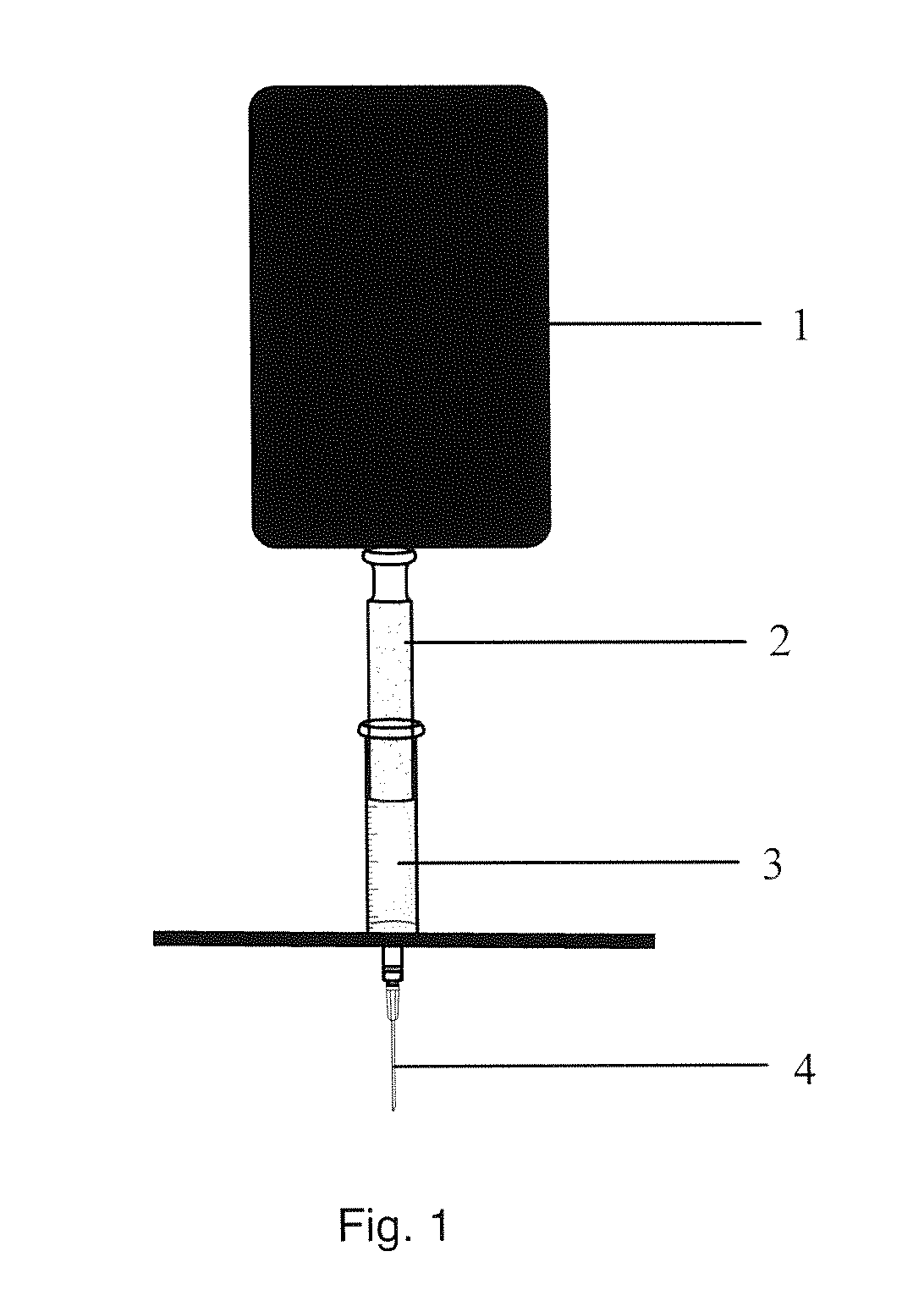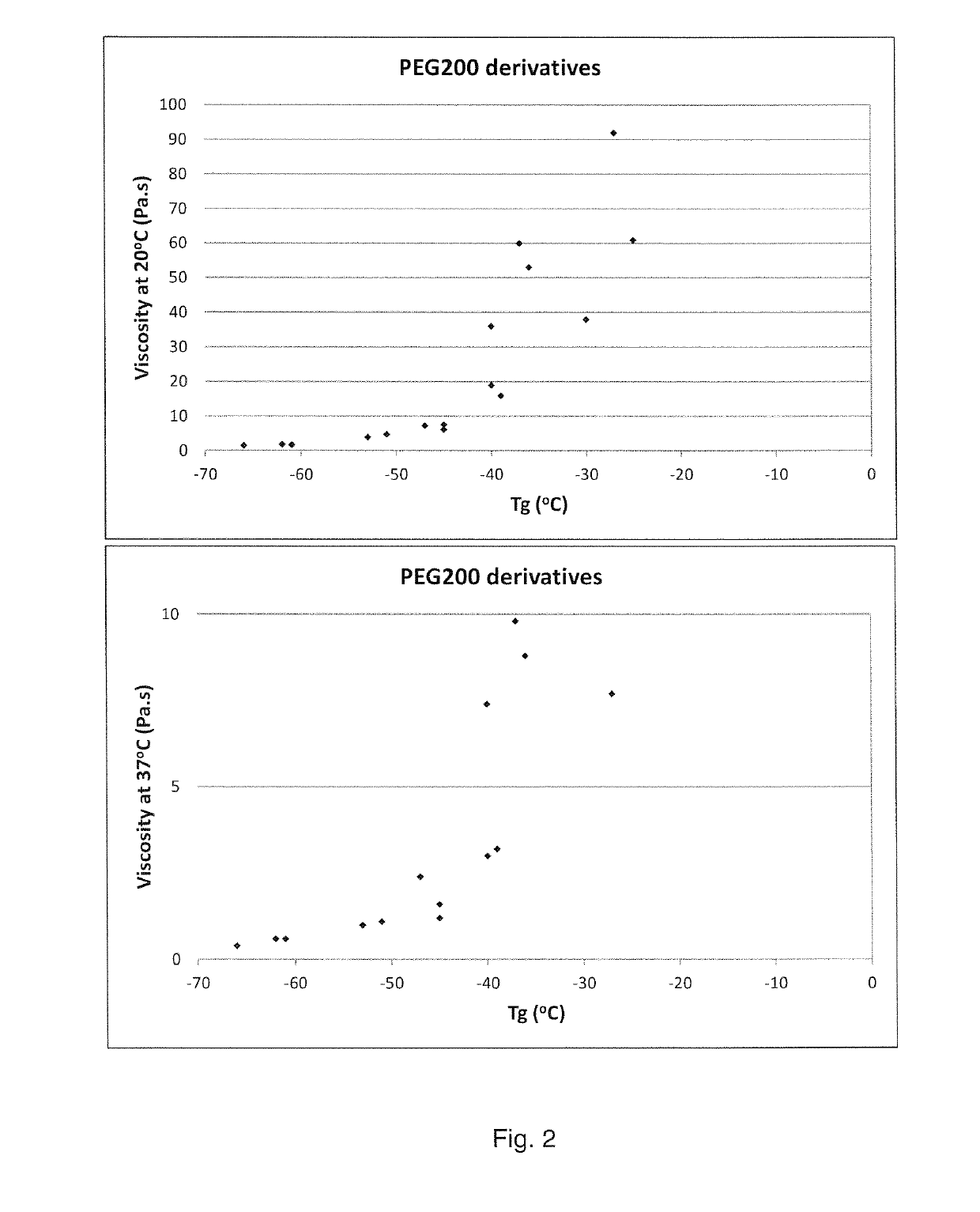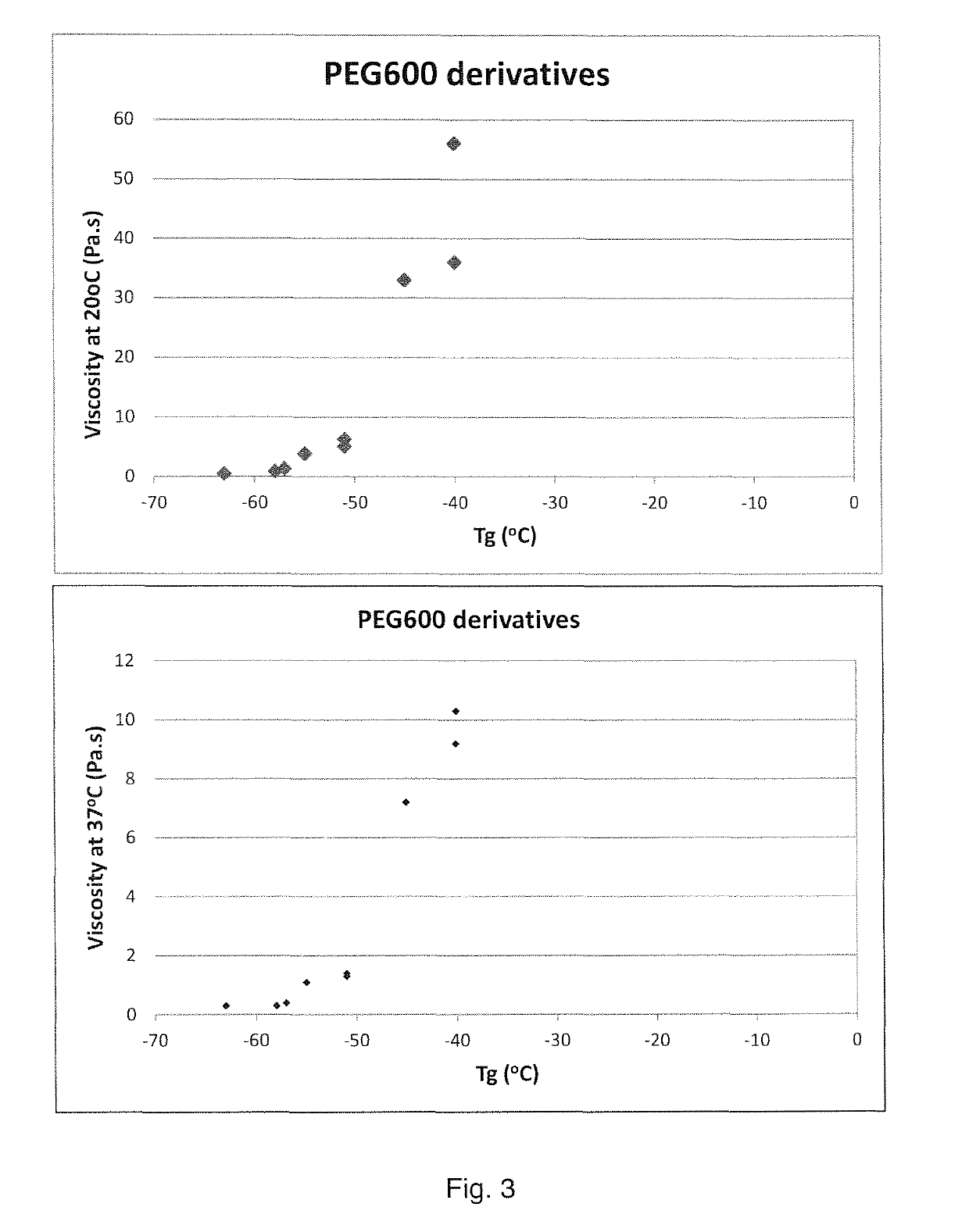Liquid triblock copolymer
a triblock and copolymer technology, applied in the field of bioresorbable triblock copolymers, can solve the problems of burst release of therapeutically active agents, many active agents that cannot survive such circumstances, and laborious process of incorporating active agents into their interior, and achieve the effect of simple process and robust
- Summary
- Abstract
- Description
- Claims
- Application Information
AI Technical Summary
Benefits of technology
Problems solved by technology
Method used
Image
Examples
experiment 1
[0157; Preparation of Copolymers.
[0158]A large number of RBABR copolymers have been prepared in accordance with the general synthesis procedure. Thermal properties and molecular weights have been determined. The results are listed in Table 1A and 1B.
[0159]
TABLE 1APolymer synthesisDegree ofThermal properties#Polymer compositionMn, PCLAPCLA / PEGCL / LAmodifycationMn, polymerPDITg (° C.)Tm (° C.)1PEG200(cap50-lac50)5.010005.01—13371.27−45—2PEG200(cap50-lac50)5.0-C310005.01214531.23−45—3PEG200(cap50-lac50)5.0-C610005.01215181.23−51—4PEG200(cap50-lac50)5.0-C1210005.01215701.23−53—5PEG200(cap50-lac50)7.515007.51—18401.33−40—6PEG200(cap50-lac50)7.5-C315007.51218501.38−39—7PEG200(cap50-lac50)7.5-C615007.51219721.36−47—8PEG200(cap50-lac50)102000101—26591.37−37—9PEG200(cap50-lac50)10-C32000101222751.50−36—10PEG200(cap50-lac50)10-C62000101224931.44−40—11PEG600(cap50-lac50)1.06001.01—12061.10−57−512PEG600(cap50-lac50)1.0-C36001.01212551.10−58−513PEG600(cap50-lac50)1.0-C66001.01213871.09−63−814PEG6...
experiment 2
[0179; Testing of Polymers for Injectability.
[0180]The polymers listed in Tables 1A and B have been tested for injectability and viscosities have been measured at 20° C. and 37° C. Results are listed in Tables 2A and B.
[0181]
TABLE 3AResults injectability and rheologyEjection time (seconds) at 20° C.Viscosity (Pa · s)#Polymer composition21 G (0.1 ml)25 G (0.1 ml)27 G (0.1 ml)At 20° C.At 37° C.1PEG200(cap50-lac50)5.0739>1207.61.62PEG200(cap50-lac50)5.0-C3633>1206.21.23PEG200(cap50-lac50)5.0-C6525>1204.81.14PEG200(cap50-lac50)5.0-C12321>1204.01.05PEG200(cap50-lac50)7.520100>120193.06PEG200(cap50-lac50)7.5-C31280>120163.27PEG200(cap50-lac50)7.5-C61048>1207.32.48PEG200(cap50-lac50)1057>120Not ejectable*609.89PEG200(cap50-lac50)10-C355>120Not ejectable*538.810PEG200(cap50-lac50)10-C634>120Not ejectable*367.411PEG600(cap50-lac50)1.016231.30.412PEG600(cap50-lac50)1.0-C315170.90.313PEG600(cap50-lac50)1.0-C615160.50.314PEG600(cap50-lac50)2.0526>1206.31.415PEG600(cap50-lac50)2.0-C3425>1205.11....
experiment 3
[0189] In-Vitro Release of Lidocaïne-HCl
[0190]A selection of polymers were loaded with 1% lidocaïne-HCl (small hydrophilic API). A known amount of loaded polymer (250-350 mg) was transferred into small tubes (15 ml), followed by the addition of 5 mL PBS (pH=7.4; 52 mm; 300 mOsm; pre-warmed at 37° C.). The tubes were placed in a shaking incubator at 37° C.
[0191]Release samples were taken during 7 days, at these time points buffer (600 μl) was removed from the supernatant and replaced by pre-warmed PBS. The samples were analysed for its lidocaine content using UHPLC.
[0192]In the first day small differences were observed between the three different polymers, composition PEG200(cap50-lac50)5.0 (FIG. 4). The effect of an end-group was becoming more clear after 2 days. After 7 days the polymer with no end-group (R=H) showed a release of approx. 51%. Slower release of lidocaïne-HCl was observed with end-groups. A C3-end-group showed a release of approx. 28% and a C6-end-group showed a rele...
PUM
| Property | Measurement | Unit |
|---|---|---|
| temperature | aaaaa | aaaaa |
| viscosity | aaaaa | aaaaa |
| Tg | aaaaa | aaaaa |
Abstract
Description
Claims
Application Information
 Login to View More
Login to View More - R&D
- Intellectual Property
- Life Sciences
- Materials
- Tech Scout
- Unparalleled Data Quality
- Higher Quality Content
- 60% Fewer Hallucinations
Browse by: Latest US Patents, China's latest patents, Technical Efficacy Thesaurus, Application Domain, Technology Topic, Popular Technical Reports.
© 2025 PatSnap. All rights reserved.Legal|Privacy policy|Modern Slavery Act Transparency Statement|Sitemap|About US| Contact US: help@patsnap.com



